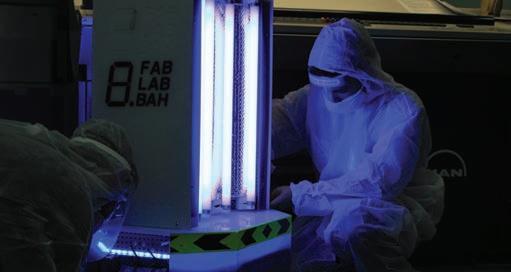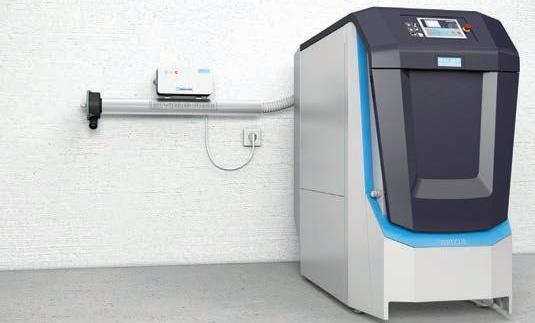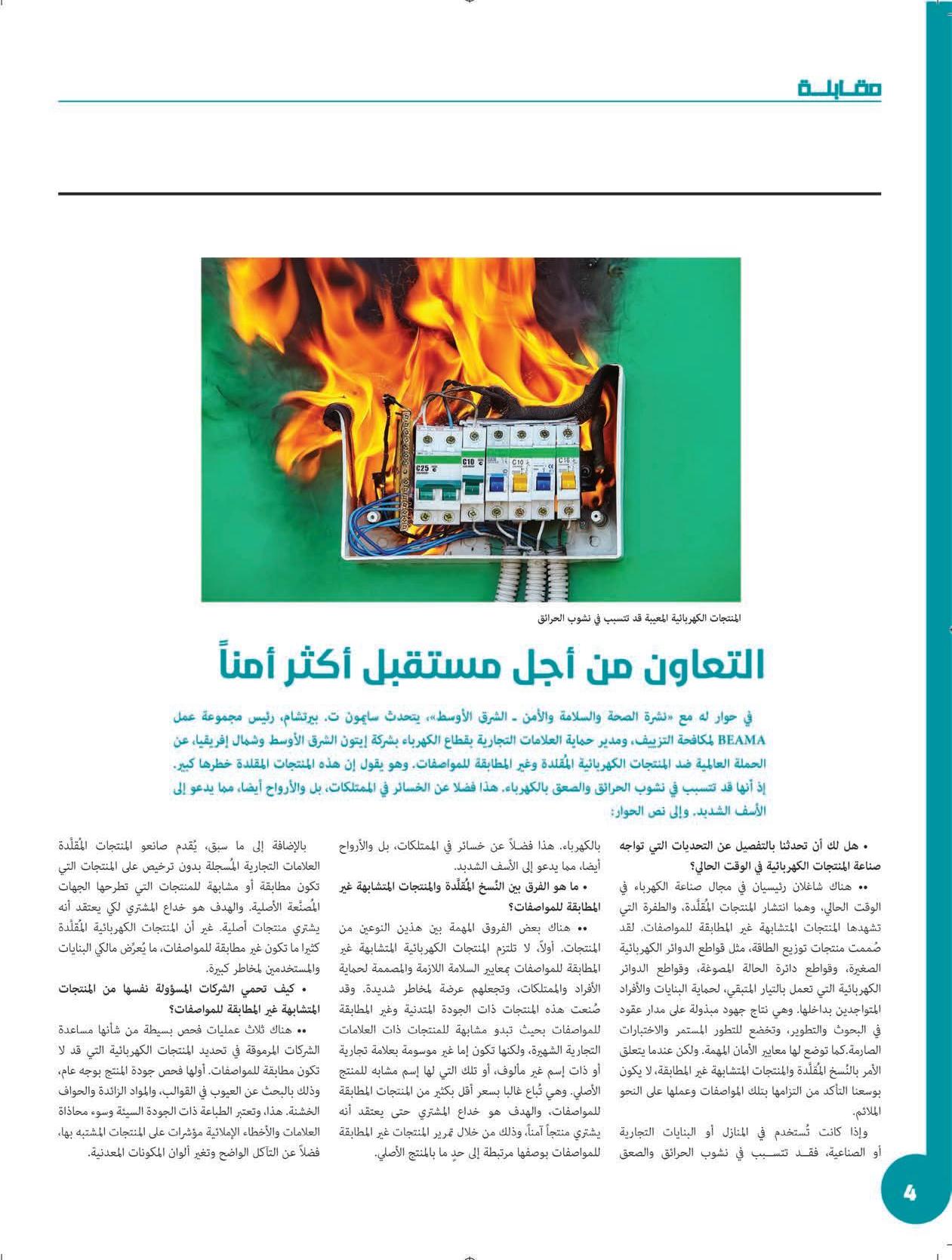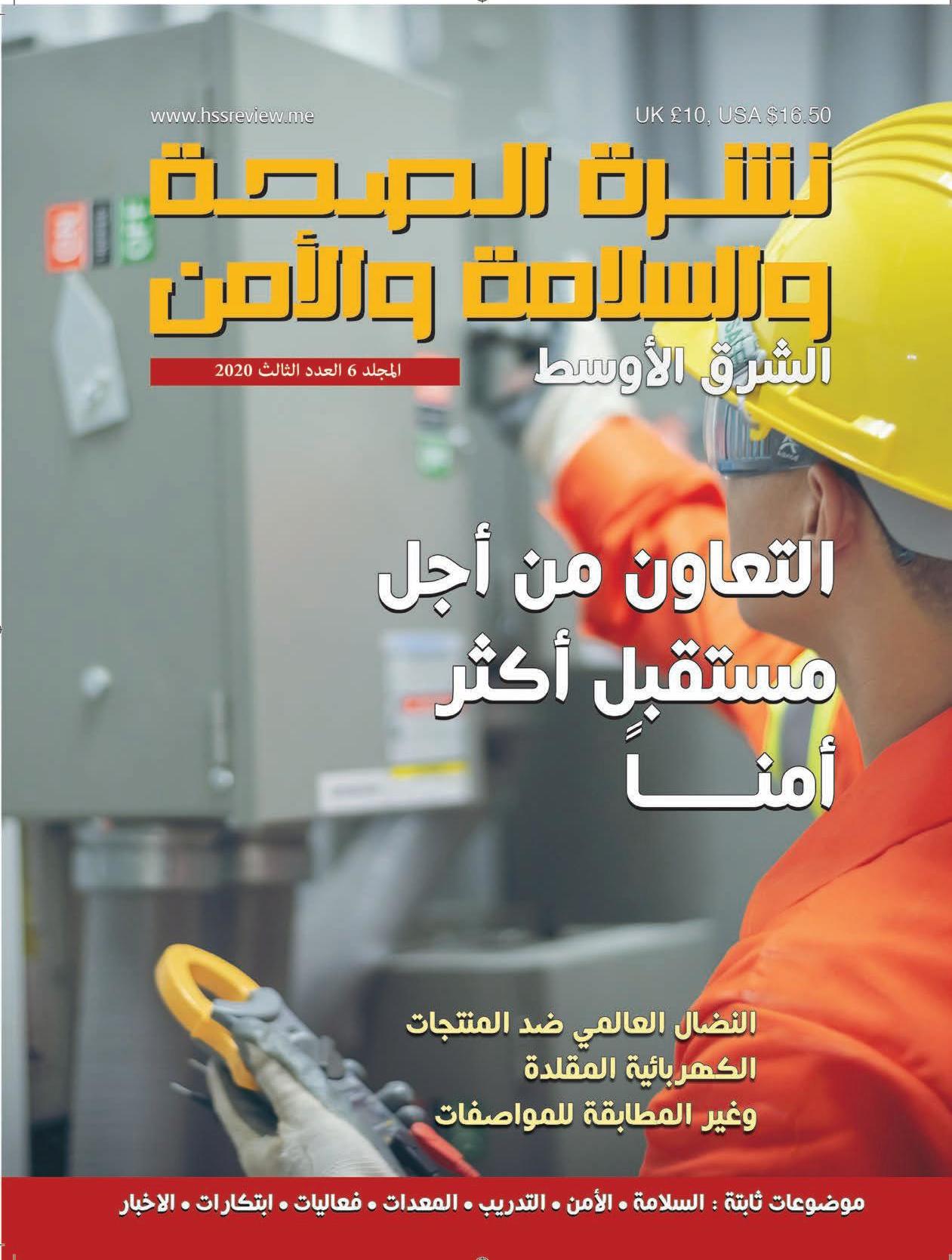
13 minute read
Product news
Fine Hygienic Holding launches Fine Guard gloves
Protective gloves Fine Hygienic Holding (FHH), a wellness group and hygienic paper products manufacturer, has launched Fine Guard Gloves, an innovative product that delivers superior infection prevention, incorporating the same Swiss patented Livinguard technology used in the Fine Guard face mask.
A recent study by Berlin’s Free University and the Institute of Textile Technology at RWTH Aachen University confirmed that Livinguard technology effectively eliminates all types of pathogens, including Coronavirus.
Compared to ordinary rubber gloves, the textile fabric provides comfort and can be washed and reused up to 30 times for a whole year without disrupting the technology's effectiveness, providing continuous value for consumers and also offering a more environmentally friendly option by reducing waste.
FHH CEO James Michael Lafferty said, “The purpose of our protective equipment, Fine Guard Masks and Fine Guard Gloves is two-fold. First and
Image Credit: Fine Hygienic Holding
The gloves incorporate ground-breaking Swiss patented Livinguard technology.
foremost, we wanted to give our consumers the greatest level of protection anywhere on the market, the second, equally important purpose is to give them peace of mind.”
FHH is Livinguard’s exclusive partner in the MENA region, providing one of the most technologically advanced and effective hygienic personal protective equipment (PPE) available on the market today to communities and consumers worldwide.
The Find Guard Mask and Fine Guard Gloves products are produced in FHH facilities in the UAE, Jordan, and Sri Lanka. The company stated that more than 30,000 Fine Guard Comfort units are in production per day in Jordan, the UAE, and Sri Lanka while 320,000 Fine Guard Gloves will be available in the first production batch.
New camera kit
Temperature screening D-Link has announced the new DCS-9500T Group Temperature Screening Camera Kit, which can simultaneously scan up to 30 people with a rapid response time, eliminating queues in busy public areas such as office buildings, factories, schools, shopping centres etc.
The DCS-9500T features dual-lens technology for highquality footage, while 17 viewing modes and intelligent facial recognition allow for accurate, rapid identification.
The DCS-9500T can precisely distinguish people and raise an alarm when someone has an elevated temperature. Body temperature can be measured to an accuracy of +/-0.3º Celsius with a sensitivity of 40mK.
The total solution includes the thermal camera and blackbody, providing higher accuracy results and fewer false alarms. The DCS-9500T also comes with free management software that allows for remote management, device configuration and data analysis across multiple sites.
Workforce management Honeywell has introduced a complete modular software solution to help industrial companies enforce compliance with important health and safety requirements as their employees return to work, including body temperature controls and automated entry management processes.
Honeywell Digitised Workforce Management - Business Continuity and Response solution uses digitised workforce management with real-time location functionality to facilitate site monitoring compliance following social distancing policies and enables contact tracing and worker safety monitoring. It also includes capabilities for remote collaboration to empower enterprise operations with reduced workforce.
The system can support Honeywell thermal cameras which can be used with NDAA 2019, Section 889 compliant systems to check for elevated body temperatures and provide input to the access control system. This can allow operators to restrict access to the entrance when detecting an elevated temperature, helping to automate the preliminary screening process and reducing manual tasks.
Digitising the entryway approval workflow for visitors and returning employees and contractors enables organisations to onboard the workforce efficiently, leveraging workforce management and access control to a new protective layer.
COVID-fighting robot deployed in Bahrain
Infection prevention A new COVID-fighting robot that emits ultraviolet (UV) light to disinfect public spaces and offices has been revealed in Bahrain.
The autonomous machine beams out short-wavelength UV which kills Coronavirus particles by disrupting their DNA in a process known as 'ultraviolet germicidal irradiation'.
A prototype designed by Fab Lab Bahrain, in collaboration with the country’s Ministry of Youth and Sports Innovation Centre, has so far been tested in industrial environments.
According to experts, the radiation emitted by UV light damages the genetic material of viruses and harms their ability to replicate. Most viruses, including SARS-CoV-2, are covered with a thin membrane easily broken apart by UV rays.
Paul Hunter, a professor in medicine at University of East Anglia, said, “That UV light inactivates SARS-CoV-2 is not surprising. UV inactivates most viruses very efficiently. Indeed,

Image Credit: APCO Worldwide
The robot uses UV light to disinfect public spaces and offices.
UV disinfection is widely used for disinfection of drinking water.”
It comes after Bahrain deployed two robots on isolation wards to help frontline health workers.
The robots, which speak 12 languages, can check body temperatures, administer medicines, serve meals and sterilise treatment rooms by beaming out pulses of ultraviolet light. The AI-powered machines are also capable of identifying patients using facial recognition and can respond to voice commands from staff.
Dr Waleed Al Manea, from Bahrain's Health Ministry, said, “We have started using the robots in the isolation and treatment facilities as part of the experimental phase to use AI in the health sector. It is certainly a new medical revolution and we want to see how this benefits patients and staff.
“This new technology will help doctors and nurses, as they can evaluate the effectiveness of the robots and help incorporate them in their daily work.”
Following an initial pilot phase, Bahrain plans to roll out the robots to hospitals nationwide.
Fire protection system for EVs
Fire protection An EU-funded project team has developed an electric and hybrid electric vehicle fire protection system which addresses and mitigates the new fire hazards associated with Li-ion batteries.
“With the rapid introduction of electric and hybrid electric vehicles in public transport, there are new challenges,” said Anders Gulliksson of Dafo Vehicle, coordinator of the project.
“When the Li-ion batteries fail through short circuiting, overcharging, high temperatures, mechanical damage and overheating, this might cause thermal runaway and the release of a flammable electrolyte, which makes fire extinguishing very difficult. In addition to the dramatic fire scenario with the rapid increase in heat, there are a lot of potentially toxic gases being emitted.”
The new system provides an early fire alarm and spot cooling system to prevent heat runaway while localising and suppressing fire. Li-Ion Fire will be available from 1 September 2020.
Siemens Smart Infrastructure launches fine dust sensor Air quality comfort of room occupants. The new sensor is available in two variants. Siemens Smart Infrastructure has launched By ensuring the early detection of One sensor has duct probes that detect fine the PM2.5 duct type fine dust sensor. hazardous particles, the sensors help achieve dust PM2.5, which are harmful to humans,
Part of the Symaro product group, the energy and cost-efficient control of the entire and PM10. The other option has multiple sensors measure dust and dirt particles, HVAC system, says Siemens. measurement capabilities to measure fine including fine sand, transmitting them The new PM 2.5 air duct fine dust sensors dust, humidity and temperature. rapidly and precisely to advanced building precisely measure and monitor the indoor The duct-type fine dust sensor design management systems for comprehensive and outside air quality. Together with a makes installation and maintenance fast and climate monitoring and control. building management system, the sensors easy, while their unique mechanical design,
This improves the indoor air quality of control the air quality in air handling units which allows air to enter and exit through the residential and commercial buildings, which and can follow the air pollution in one or same opening, offers a very high level of in turn has a positive effect on the health and multiple rooms. precision.
BAUER KOMPRESSOREN introduces BVirusFree breathing air protection
Air quality BAUER KOMPRESSOREN has developed B-VirusFree – a solution that eliminates viruses at the air intake stage. The system is designed to protect firefighters, divers, pressure chamber operators and medical staff from these hazards whenever they require respiratory equipment for their daily operations.
The B-DETECTION PLUS online gas measurement system already provides accurate measurements of the commonest hazardous substances associated with breathing air, such as CO, CO 2 , moisture and oil, and eliminates them using BAUER filter systems. However, a new threat now lurks in the form of viruses like SARS-CoV-2, as well as bacteria and moulds. These new dangers are particularly insidious because they are invisible and highly communicable – and cannot be measured by sensors. Inhaled in ambient air, they can pass through any commercially Safety lighting Emerson’s new Appleton EHLED handlamp has been engineered to provide portable task-specific lighting at hazardous industrial sites. Compact and lightweight, it can be transported and used virtually anywhere, including tight, restricted spaces.
A factory sealed, explosionproof Class I, Division 1
The B-VirusFree protective filter system eliminates viruses at the air intake stage.
available standard air purification system. Even the high temperatures and pressure levels of the compression process have little effect on them because of their short exposure to the process.
The new B-VirusFree protective filter system reliably neutralises – depending on the charging rate of the compressor –up to 99.9 per cent of the corona viruses, bacteria and special moulds, removing them from the approved design qualifies the handlamp for oil refineries, tank inspections, fuel storage centres and other classified areas where ordinary handlamps are not permitted.
The Appleton EHLED is built to withstand corrosive elements, features an impact- and
Image Credit: BAUER Kompressoren

intake air. The chemical- and ozone-free technology of the patent-pending B-VirusFree System uses a special UV light source to destroy pathogens in the intake air flow before they can reach the compressor.
B-VirusFree can be ordered alongside any new BAUER system and is also easy to retrofit. The filter system is designed for flexible mounting to a wall and has a compact footprint for extra ease of handling and convenience. heat-resistant glass globe and is completely watertight. Its nonsparking swivel hook can be mounted on a pipe with a diameter of up to 3/4 inches for handsfree
New H 2 S detector
Gas detection Teledyne Gas & Flame Detection has introduced the Multitox MOS Detector for H 2 S detection in desert and Arctic environments. The Multitox DGTT7-S (Type D), Simtronics provides best-in-class support when H 2 S is a constant threat. By utilising the latest solid-state Metal Oxide Semiconductor (MOS) technology, inside a rugged and durable detector head, Teledyne enables H 2 S to be detected easily, without the risk of poisoning, whilst providing sensor life of up to 10 years and an extended five years warranty as standard. This, combined with the company’s Telecapteur Asset Management Software, being developed in partnership with ADNOC, enables automatic visualisation of key information, including instant access to historical calibration data, enabling quick and accurate analysis instead of relying on slower paper-based processes. The software simplifies calibration by reducing the number of operators required
Appleton explosion-proof handlamp for hazardous locations
from two to one.

operation.
The 9W LED bulb is rated for enclosed spaces providing 800 lumens of light output, or the equivalent of a 60W incandescent lamp. LED operates at significantly cooler temperatures than metal halide or HID lamps, and does not contain harmful gases, vapours or mercury, making it safer for the workplace.
Volvo Penta develops electric driveline for fire truck
Fire safety Volvo Penta has developed an electric driveline for leading fire service vehicle manufacturer Rosenbauer’s pioneering fire truck, offering zero exhaust emissions and significantly reduced noise levels. The truck –named “Revolutionary Technology” (RT) – is currently undergoing intensive testing and will soon begin real-world customer testing with fire departments in Berlin, Amsterdam and Dubai.
With its electric driveline, paired with independent suspension and a hydropneumatic chassis, the fire truck boasts excellent ergonomics, functionality and safety, as well as high loading volumes, compact dimensions and agility.
The Volvo Penta electricallypowered RT truck will help fire departments reduce their fuel costs as well as improve safety and functionality. Each axle of the truck is powered by an electric motor, and the energy storage system allows for an electricity-powered journey with
Image Credit: Volvo Penta

The electrically-powered RT fire truck.
ample time for operation at the rescue site. The truck also has a backup diesel engine on board.
“After many years of successful collaboration with Rosenbauer, we’re proud to be pioneering electric drivelines and partnering with them on this revolutionary project,” said Paul Jansson, chief project manager at Volvo Penta. “This is our first industrial OEM partnership in the area of electromobility, and it’s a big step towards creating a new product platform of the future.” “The teams at Volvo Penta and Rosenbauer have been working together closely to design a tailored solution that enables the electric fire truck to do its job in a more safe, effective and sustainable way than a conventional vehicle,” added Dieter Siegel, CEO at Rosenbauer International. “Together, we have created the most revolutionary and progressive vehicle in the fire service industry.” New disinfection technology Infection control Aquila has unveiled technology combining the effectiveness of UV with the cleaning power of plasma to disinfect masks and gowns in a matter of minutes, without having to send them off site. It protects medical workers by disinfecting their mask in less than a minute whenever they take a break.
Aquila are developing a working prototype for disinfecting masks, with a larger machine to follow –aimed at processing of gowns, incorporating a unique design of disinfectant chamber to ensure thorough cleaning and supported with software to personally identify each individual mask and gown.
To ensure that every part of a gown is disinfected, Aquila uses ionised air vortex technology that inflates the gown to expose each surface to the UV light.
Areas that are not generally exposed, e.g. gown folds, etc., receive both high-intensity UVGI and plasma exposure to ensure complete disinfection within a minute.
Flame retardant fabrics Carrington Textiles has announced the NFPA 2112 certification of its re-engineered range of flame retardant fabrics in response to the needs of customers who want to offer garments that not only provide comfort, but also excellent performance against flash fire, electrostatic discharge, ultraviolet radiation, electric arc and chemical splash.
The NFPA 12 standard protects workers from flash fire exposure and injury by specifying performance requirements and test methods for flame-resistant fabrics.
The Flameshield family in their 230gsm and 280gsm weight versions are 100 per cent cotton, offering lightweight, hardwearing properties and breathability. Flametuff 220AS, 250AS and Satin 330AS combine high cotton content with high tenacity nylon, offering antistatic properties and ultraviolet protection of 50+ UPF. Also providing antistatic properties, as well as incorporating CORDURA technology for long-lasting performance is Flametougher 280AS, Carrington Textiles’ next generation of stronger, tougher and more hardwearing flame retardant workwear.
Carrington Textiles’ sales & marketing director, Paul Farrell, commented, “All garments can look the same, but the difference between having workwear that’s NFPA 2112 certified or not will unfortunately make the difference during an on-site accident.”


Company ..........................................................................................................................................................................................................Page Hughes Safety Showers Ltd ................................................................................................................................................................................................................................2 MACS - G Solutions................................................................................................................................................................................................................................................5

Shanghai Select Safety Products Co. Ltd ........................................................................................................................................................................................................6









